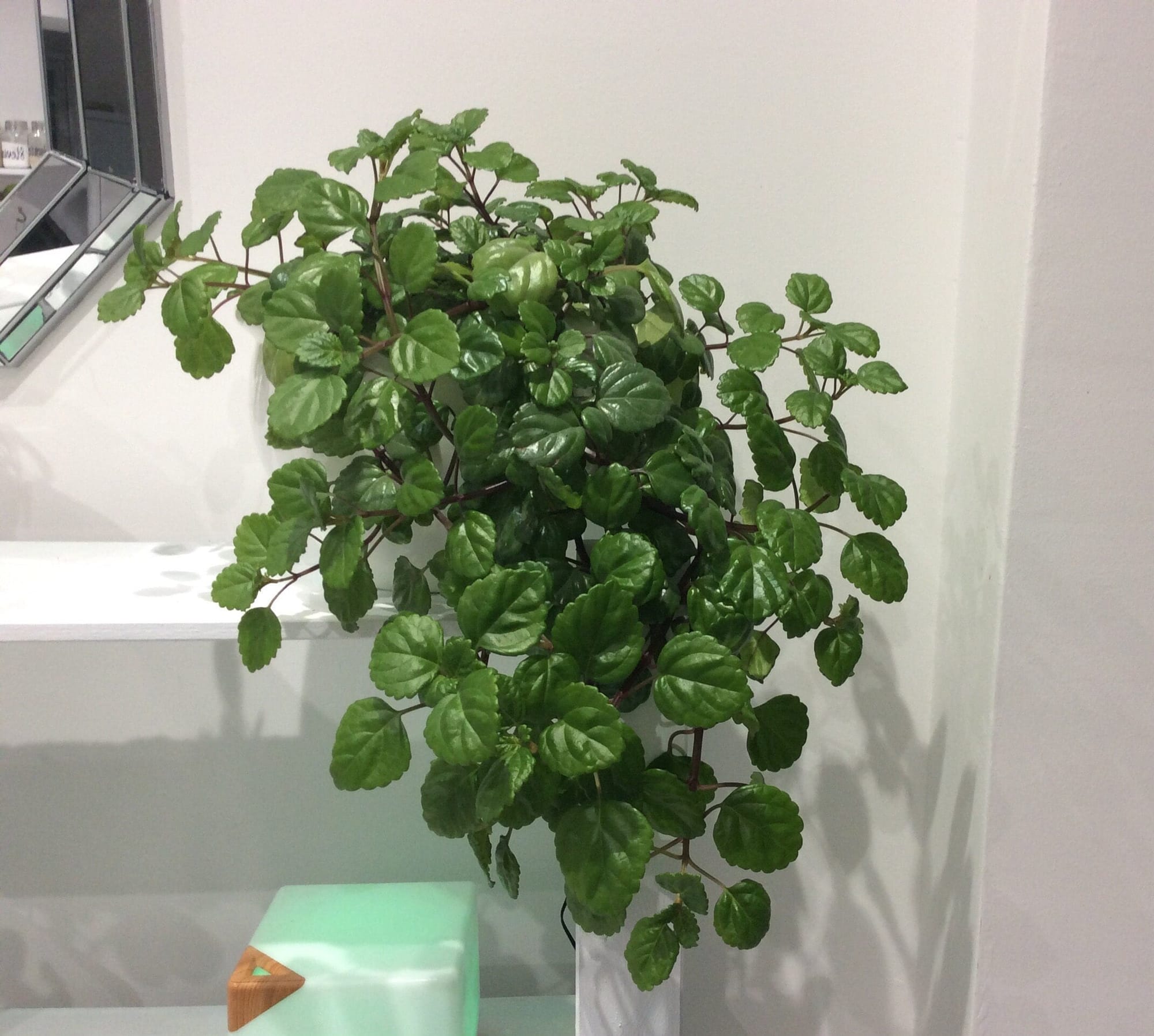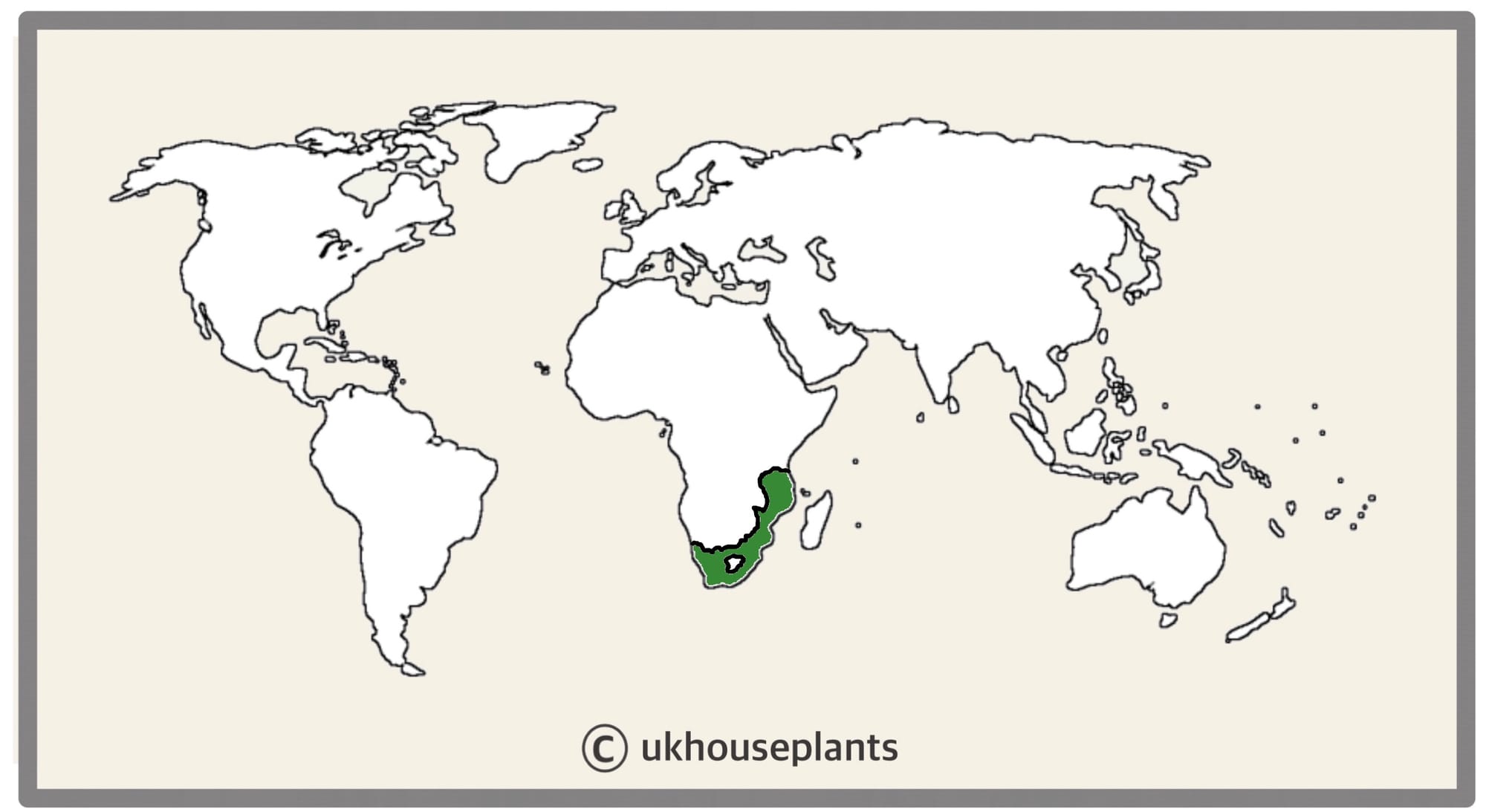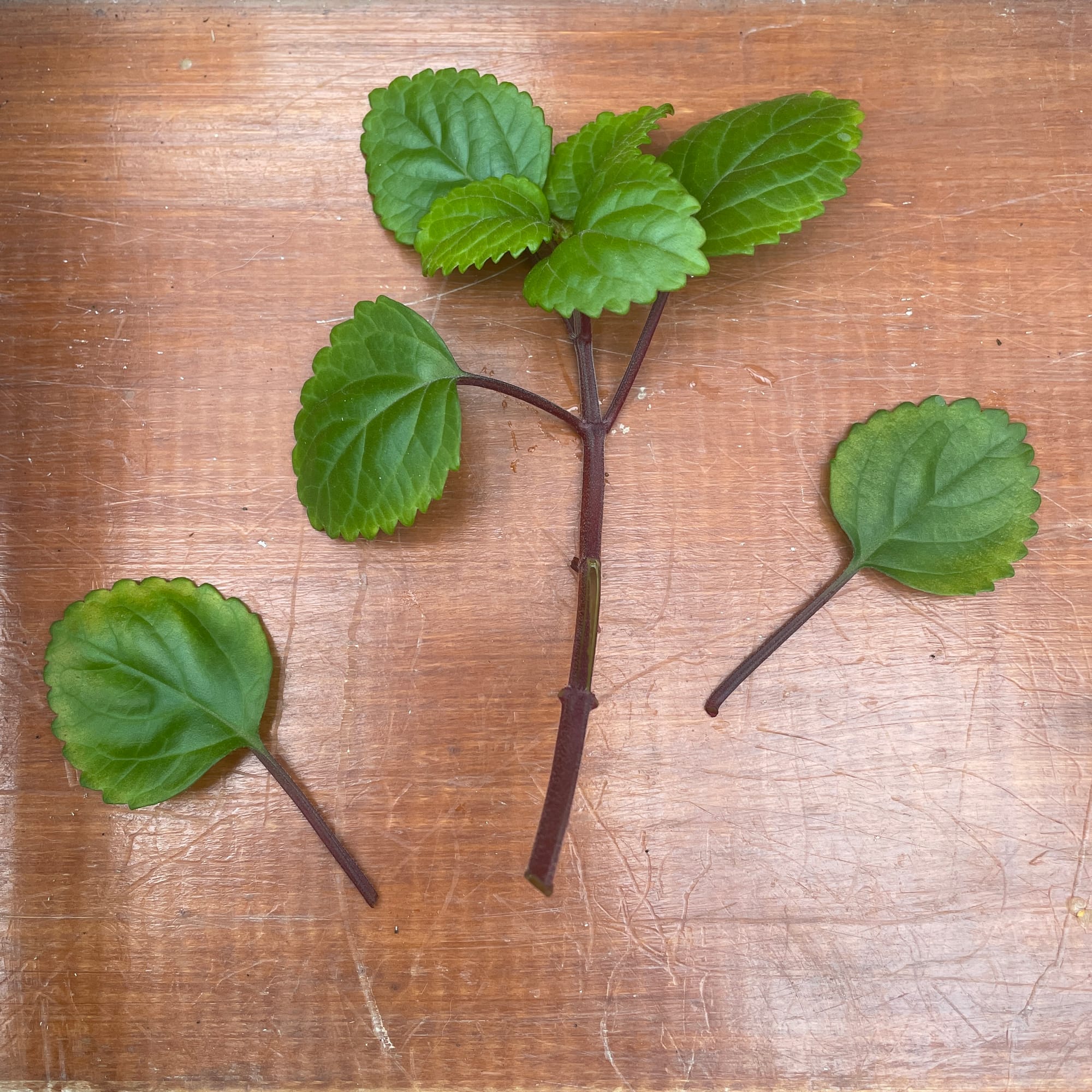
Plectranthus verticullatus
Contents
- Top Tips
- Location, Water, Humidity & Fertilisation
- Common Issues
- Origins, Temperature, Propagation, Repotting & Toxicity.
Need the answer to a specific plant query? Book a 1-to-1 video call with THE HOUSEPLANT DOCTOR™, the website's friendly author, to overcome and address your niggling problem! Available on iMessage, WhatsApp, Facebook Messenger & more.
Top Tips & Info
- Care Difficulty - Very Easy
- Swedish Ivy can grow in almost all rooms & light levels in the home. Avoid positioning it more than 3m (10ft) from a window, though.
- Due to its thick fleshy leaves, this plant is perfect for gardeners who forget to water; only rehydrate the soil once the top later is dry to the touch.
- Feed every third water using a 'Houseplant' labelled fertiliser all year round. Having said this, don't worry if you forget as Swedish Ivy is very forgiving!
- THE HOUSEPLANT DOCTOR™ recommends to repot your plant every two to three years in the next sized pot with a 'Houseplant' potting mix.
- Although pests aren't usually an issue, keep an eye out for Fungus Gnats that'll inhabit in over-watered soils.
Location & Light - 🔸🔸🔸
First things first; Swedish Ivy is a very unchallenging plant to grow. It'll forgive you on almost anything you do 'wrong', so don't worry if you misplace it at the start in a too-shady location.
We recommend placing yours in a north, east or west-facing windowsill, or on a shelf/furniture within 3m (10ft) of a window to create a lush trailing appearance. Remember: The darker the location, the 'leggier' the vines may become, so keep the light levels bright if you're seeking a bushy plant.
Water - 🔸🔸
Again, Swedish Ivy isn't too fussy if you forget to water it sometimes. THE HOUSEPLANT DOCTOR™ recommends to rehydrate the soil once the top third dries out in between waters; this may be every five days (in sunnier/brighter areas) or every ten days in shadier areas. It'll take a few weeks to ace its watering needs, so monitor the drying-speed of its potting mix and soon you'll be a professional. Under-watering symptoms include slowed growth, wrinkly/soft leaves and crisping foliage. Over-watering symptoms include rapidly yellowing/browning older leaves (closest to the soil), a rotting/black stem and gradual decline. Scroll down to 'Common Issues' to learn more on root rot.
Humidity -🔸
Swedish Ivy can grow in all humidity levels found in a typical home.
Fertilisation - 🔸🔸🔸
Fertilise every three waters using a 'Houseplant' labelled feed, all year round.
Common Issues with Swedish Ivy (Plectranthus verticillatus)
A dark location (shelves MORE than 3m from a window) will result in leggier vines that have more stem than foliage. Although keeping this plant on a shelf/furniture is totally fine, if it's more than several metres from a natural light source, consider relocating it into a more exposed area. Take stem cuttings to promote a new offshoots and propagate the prunings.
Yellow or dull older leaves could be the product of irregular watering, along with a nutrient deficiency, too. If you're having issues of persistent droughts, followed by periods of over-watering, your Swedish Ivy may begin to show signs of poor health with its foliage taking most of the brunt. You must also regularly feed the plant, as low nutrient levels within the soil could also result in weakened photosynthetic rates, thus contributing further to its yellowed appearance. Although the leaves won't revert to its former green glory, the juvenile growth will show better signs of health within the oncoming weeks.
Curled leaves and dried brown edges are the result of too little water and over-exposure to the sun. Although this species can naturally do well in bright locations, those that haven't acclimatised to the harsh rays will show signs of sun-scorch and environmental shock. Prolonged exposure will significantly speed the process of dehydration, so consider transplantation into a bigger pot in the spring to wrap the roots around moister soil.
Dust the leaves regularly. Although this isn't too much of an issue, a build-up of dust particles can clog up the plant's pores, causing lowered light capturing-efficiency. Using a damp cloth with warm water, wipe the topsides of the leaves down once a month to keep levels down and improve growing conditions.
If the rootball (i.e. the soil) has constricted and become smaller, the plant may become loose within the pot. This is the direct product of under-watering, whereby the roots have literally squeezed the pot for all remaining moisture. Fill the gaps with a fresh batch of 'Houseplant' labelled compost and increase watering slightly.
Sudden crispy, grey or wilted foliage shortly after being repotted is a symptom of transplant shock. Increase the humidity around the plant, maintain evenly moist soil and feed every third water with a 'Houseplant' labelled fertiliser. Your Swedish Ivy is wilting due a damaged root system that doesn't uptake enough moisture to keep its foliage hydrated. Wrap the plant (& its pot) in a transparent plastic bag and check for drying soil. Provide a bright, sunless windowsill with temperatures above 18 ℃ (64℉) and wait for new growth to emerge in a few weeks. Additional Step: Purchase a 'foliar feed' from a local garden centre and mist the foliage to nourish the plant, thus helping its recovery process.
Origins
The origin of its name, 'Swedish Ivy', is one that can be confusing; not only does the plant not naturally grow in Sweden, but it can't even climb up a tree or building (typical of all ivies!). The name most likely comes from the initial popularity in this country before being propagated and commercialised elsewhere in Europe and the world.
Plectranthus refers to the 'spur'-like flower structure, whereas verticillatus describes this species' whorled, overlapping petal formation. The plant was first discovered around the 1780s in south-eastern Africa by Carolus Linnaeus the Young, describing the species as Ocimum verticillatum - placing it in the same genus as the Basil plant we use in cooking. It was replaced in its current genus (Plectranthus) in 1917.
 The Distribution of Swedish Ivy (Plectranthus verticillatus)
The Distribution of Swedish Ivy (Plectranthus verticillatus)
Temperature
12° - 30°C (50° - 86°F)
H1c (Hardiness Zone 11) - Can be grown both indoors (all year round) or outdoors from late spring to summer throughout most of the UK while nighttime temperatures are above 8℃ (46℉). THE HOUSEPLANT DOCTOR™ recommends keeping this plant indoors all year round, though.
Spread
Up to 0.8m in vine length, with the ultimate height being reached in 3 - 6 years. Expect around 10cm (4 inches) of new growth per annum.
Pruning & Maintenance
Remove yellow or dying older leaves to encourage a better appearance. While pruning, always use clean utensils or shears to reduce the chance of bacterial and fungal diseases.
Due to its rapid growth, THE HOUSEPLANT DOCTOR™ recommends reducing the plant's overall size back by a third each spring time to promote a bushier appearance with new branches. Any prunings that are more than 5cm in height can be propagated as stem cuttings (read below).
Propagation
Via Seed or Vine Cuttings.
Vine Cuttings
- Choose the healthiest, most established vines from the leading growths. This propagation method can be taken from spring to summer, using two nodes.
- Prune 5cm off the tip of a stem, directly below a node (where the leaf joins the stem). Scroll down to the image below to see an example.
- Remove the older half of the leaves and place the cutting into water. Once small roots develop (3cm / 1 inch), which can take up to 30 days, it's time to prepare the soil and pot.
- Use a 7cm (2.7 inches) pot that has good drainage holes - plastic or terracotta are both acceptable in this instance. 'Houseplant' labelled composts are best as they'll provide adequate drainage and airflow around the roots. Alternatively, place the cutting back into the soil of the mother plant to promote a bushier appearance.
- Set the cutting into the compost, keeping the foliage above the soil line. Be sure to submerge the bottom nodes into the soil, or else further root development will hinder. Try not to over-pot the cuttings - blackleg occurs when the bottom wound becomes infected, typically caused by water-logging with too little light.
- Avoid direct sunlight and maintain moist soil to prevent dehydration. After a twelve-week period in the soil, treat the specimen as a mature plant by following the care advice penned above.
 The ideal size for a Swedish Ivy cutting.
The ideal size for a Swedish Ivy cutting.
Flowers
After around two years of ownership, your Swedish Ivy will produce a cluster of white flowers at the end of several stems. The overall flowering period will be around three weeks, with each bloom measuring only 1.5cm (0.7 inches) in length.
 The flowers of a Swedish Ivy are trumpet-shaped with small black dots across the inside of the petal.
The flowers of a Swedish Ivy are trumpet-shaped with small black dots across the inside of the petal.
Repotting
Repot every two or three years in the spring, using a 'Houseplant' labelled potting mix and the next sized pot with adequate drainage. It's natural for Swedish Ivy to become pot-bound quickly within two years, with a common symptom being a rootball that's loose and too small within the pot.
When it's time to repot, hydrate the plant's soil 24hrs before tinkering with the roots to prevent the risk of transplant shock. Be as gentle as possible by not over-touching or pulling soil from the roots. Click on this link for a detailed step-by-step guide on transplantation, or via this link to learn about repotting with root rot.
Book a 1-to-1 video call with Joe Bagley, THE HOUSEPLANT DOCTOR™, if you'd like a personal guide to repotting your plant. This will include recommending the right branded-compost and pot size, followed by a live video call whilst you transplant the specimen for step-by-step guidance and answer any further questions!
Pests & Diseases
Swedish Ivy is generally pest-free; however, keep an eye out for mealybugs, root mealybugs and Aphids (the latter will only attack the new, fresh growth). Typical diseases associated with this genus are botrytis, powdery mildew & root rot. Click here for more information about how to identify and address any of these issues.
Toxicity
Not known to be poisonous when consumed by pets and humans. If large quantities are eaten, it may result in vomiting, nausea and a loss of appetite.
Retail Locations
Online Marketplaces (cuttings available on Facebook or Gumtree) & Online Stores.
Book a 1-to-1 Call with THE HOUSEPLANT DOCTOR™
If you need further advice with your houseplants, book an advice call with ukhouseplants' friendly and expert writer today! This can be done via a video or audio call on most apps, including Facebook, FaceTime & Skype. A ten-minute call costs £5.99 (US$7), or £15.99 for thirty minutes. You can ask multiple questions, including queries on plants, pests, terrariums, repotting advice and anything in between. Please consider supporting this service to keep ukhouseplants thriving!